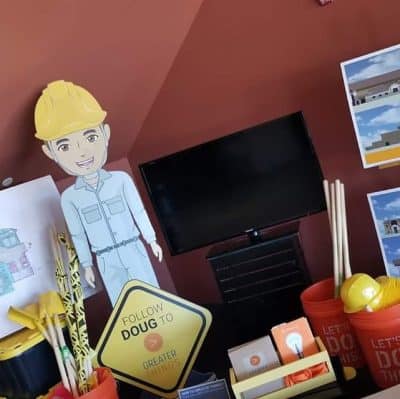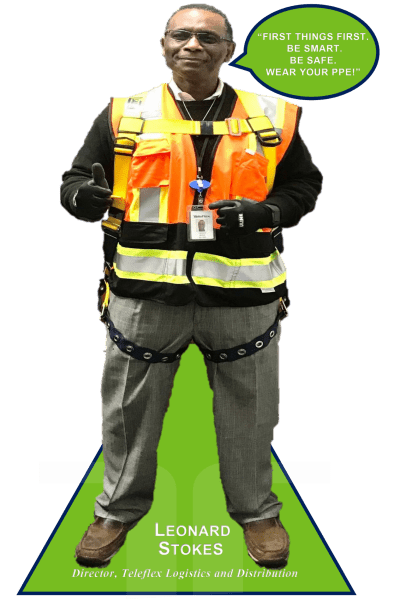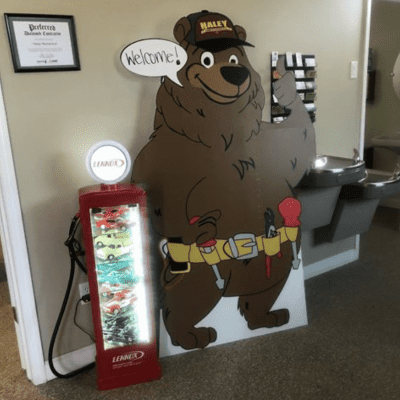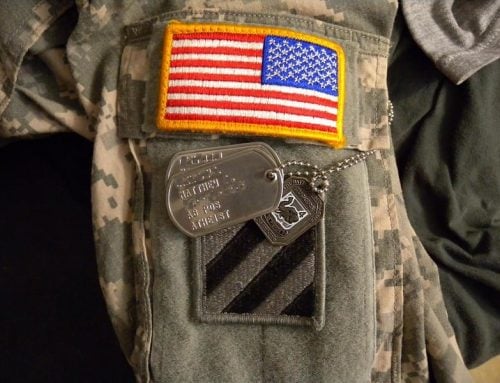Today’s employers are serious about keeping workers safe. Their efforts make a difference, as seen by a steady decline in workplace injuries. Between 2019 and 2020, for example, the rate of non-fatal workplace injuries decreased by a dramatic 5.7 percent. This would not have been possible without a concerted effort from employers.
Business leaders have increasingly found that, by implementing simple measures to keep their employees safe, they can provide the care these hardworking individuals deserve while also enjoying significant improvements in productivity and morale.
One of the most effective solutions for promoting a safe and efficient work environment? Easy-to-spot signs. These are more influential than many employers and workers realize — and without them, accidents are more likely. Often, however, employers are willing to settle for ineffective signage that workers fail to notice.
In this guide, we explain why safety signs are so important, which signs should be used, and how creative solutions such as cardboard cutouts or decals can boost safety initiatives.

What Role Do Safety Signs Play in Workplace Safety?
Proper signage is vital to workplace safety. Signs are crucial for managing the flow of traffic, alerting employees to potential hazards, and letting them know how they can make the most of personal protective equipment (PPE).
Without easily identifiable signs, workers may struggle to know where or how they should move throughout the facility — or which steps they should take to keep themselves and their fellow employees safe.
The following are among the most important safety functions that signage can serve:
- Encourage workers to wear PPE. From masks to safety goggles, workers need to dress with safety in mind. Some employees may not realize the importance of personal protective equipment, however, while others may simply neglect to wear PPE properly. Cardboard cutouts and safety signs can prevent these problems by clearly demonstrating how PPE should be used in the workplace.
- Direct workers towards emergency services or first aid equipment. In the event of an accident or injury, workers need to know where they can find help. Depending on the situation, this may mean easily locating a first aid kit, a fire hydrant, stairs, or an exit.
- Inform workers of hazards that prompt limited access. Signal words such as “hazard” or “warning” should instantly convey when dangerous situations are likely. Signs can also let workers know which areas may contain radioactive materials or where PPE is especially important.
- Promote the safe and efficient flow of traffic. Accidents are far less likely when employees know where they should go, how they should get there, and which routes they should avoid. Signage should instantly convey this information. Ideally, signs will provide clear instructions for how to safely and efficiently navigate the workplace.

ANSI/OSHA Safety Signage
Safety instruction signs should conform to standards set by the American National Standards Institute (ANSI) and the Occupational Safety and Health Administration (OSHA). These organizations provide specific guidelines to ensure that many different types of signs are easy for workers to observe and understand. We’ve highlighted a few of the most important signs below:
Compliance Signs
Compliance signs direct employees on how to behave in specific situations. While these can encompass hazard awareness (as indicated by caution, danger, and, of course, hazard signs), they may also involve seemingly everyday behaviors that potentially compromise both safety and comfort. No smoking signs, for example, are valuable for promoting both short and long-term health or safety benefits.
Caution and danger signs are among the most common options in this category, but many other varieties can be expected in modern facilities. These include:
- Hazard
- Notice
- No Smoking
- No Trespassing
- Personal Protective Equipment (PPE)
- Warning
- Watch Your Step
When selecting compliance signs, keep in mind: while many signs are almost universally understood by employees, some regional differences are to be expected. In California workplaces, for example, Prop 65 Warning Signs highlight the presence of chemicals known to cause reproductive issues such as birth defects.
Many workers are so accustomed to seeing compliance signs that they may fail to absorb the important information they contain. Attention-grabbing displays such as cardboard cutouts can make a difference by getting these employees to take notice. They may also provide a clearer representation of how, exactly, workers can improve compliance.
For example: if PPE is required in a specific area, standees could not only instruct workers on the necessity of this equipment, but also, demonstrate how to wear it properly. Workers will never struggle to notice these imaginative and evocative displays.
Facility Signs
These signs provide helpful insight on where various resources can be found throughout the facility and, in general, how to navigate the workspace. This might involve delineating specific types of zones, such as construction areas. Examples include:
- Construction
- Door Swing Indicators
- Do Not Enter
- Fire Extinguisher
- First Aid
- Radioactive
- Restroom
- Trash Can
Some signs provide the added benefit of boosting workplace efficiency. The 5S sign, for example, draws on Japanese terms that translate to instructions such as “sort” “shine” or “standardize.” The goal is to promote lean production, but these signs can also help to limit workplace clutter — and this, in turn, improves safety.
Foreign Object Damage or Debris (FOD) signs can also serve this important function by encouraging workers to clear aisles, shop floors, and other critical spaces of unwanted items. Before signs are implemented, identify FOD-sensitive areas.
Employees should be made aware of FOD status through signage and clearly enforced clean-as-you-go policies. Feel free to add a bit of humor or cheer with creative cardboard standee displays highlighting how and why areas of FOD concern should be kept clean.

Traffic Signs
Stop signs and other traffic indicators should be familiar to any driver. They’re just as vital in or around the workplace as they are on major highways. In a work environment, they may be used to direct traffic for everything from forklifts to company fleets.
Do not hesitate to promote a safer flow of traffic with help from these traffic and parking signs:
- Arrow
- No Parking
- Speed Limit
- Stop
- Yield
While decals are a great option for conveniently displaying signage in a variety of locations, cardboard cutouts may be more effective for grabbing workers’ attention. Depending on the source of the traffic and any potential safety hazards, a combination of ANSI-compliant decals and creative cutout standees should prove effective.
Creating Custom Safety Signs
If placed strategically, cardboard cutouts and decals can be great options for boosting safety awareness at your facility. Easily customizable, they can be tailored to meet the unique needs of your business while still remaining compliant with regulations from ANSI and OSHA.
At Cardboard Cutout Standees, we offer two excellent signage options, both of which can instantly improve workplace safely when strategically implemented:
Standee Cutouts
These customizable cardboard signs immediately attract attention from employees who might otherwise fail to notice important signage. They are offered in many sizes and formats and can be constructed from corrugated plastic to withstand the elements.
Standee cutouts can be used creatively for letting employees know where the restroom or trash cans are — or which areas they should not enter. As mentioned previously, they are also excellent for highlighting the necessity of PPE — or how it should be properly used in specific places or situations.
Decals
Available with self-adhesive, decals can be used in place of traditional signage for spaces in which maximum flexibility is required. These are just as easy to remove as they are to apply, so feel free to adjust their placement as needed.
Large, brightly colored decals can make an instant visual impact, so they will not be missed. Place them on a white background to make these decals pop.
Improve Safety Awareness With Cardboard Cutout Standees
Whether you want to integrate decals or cardboard cutouts into your safety initiatives, the team at Cardboard Cutout Standees can help. We’re determined to make your workplace as safe and efficient as possible. We believe that unique signage such as cardboard standees can make a positive difference for your business and your valued employees. Contact us today to learn how we can assist you in creating and customizing eye-catching decals and cutout displays.









